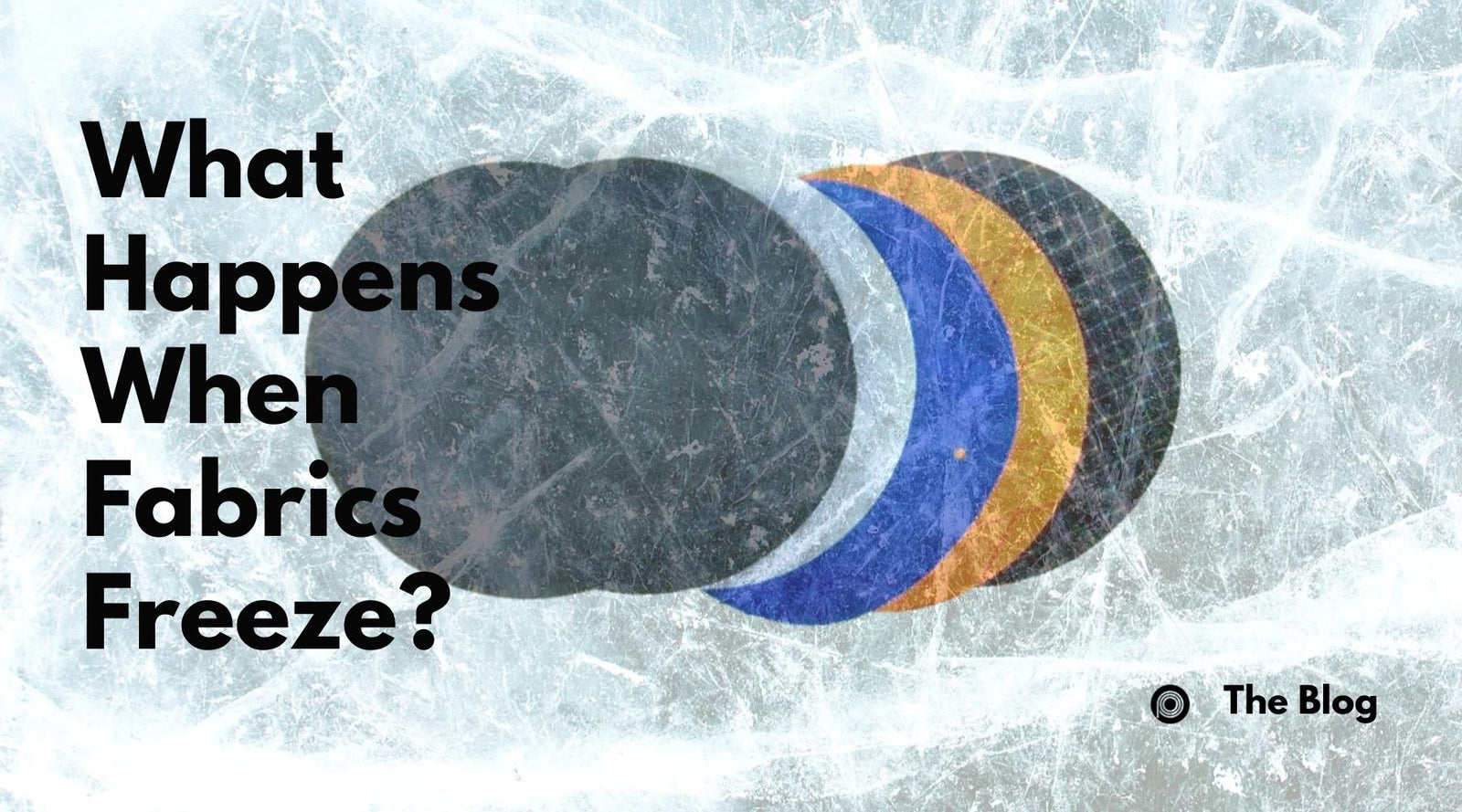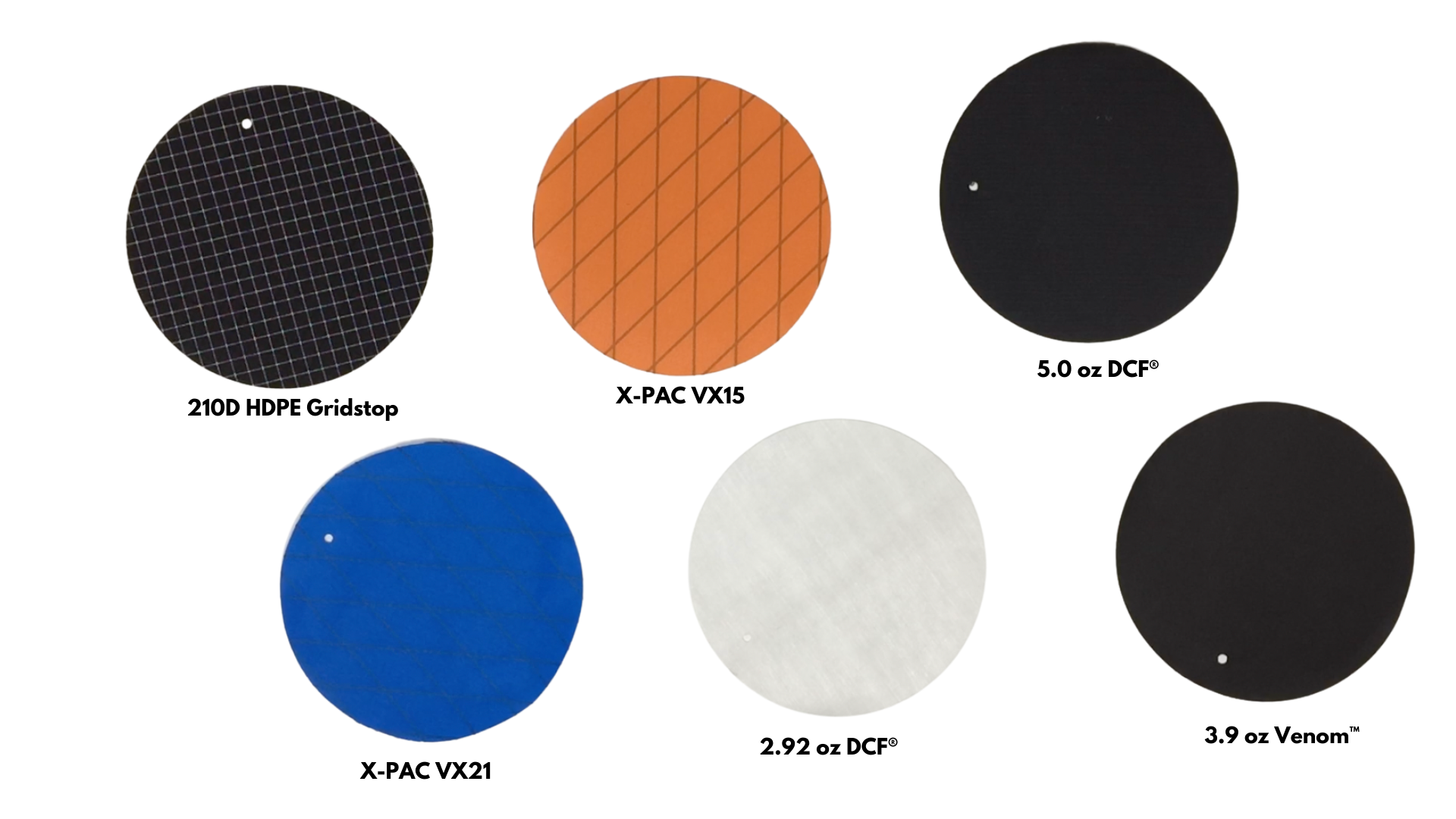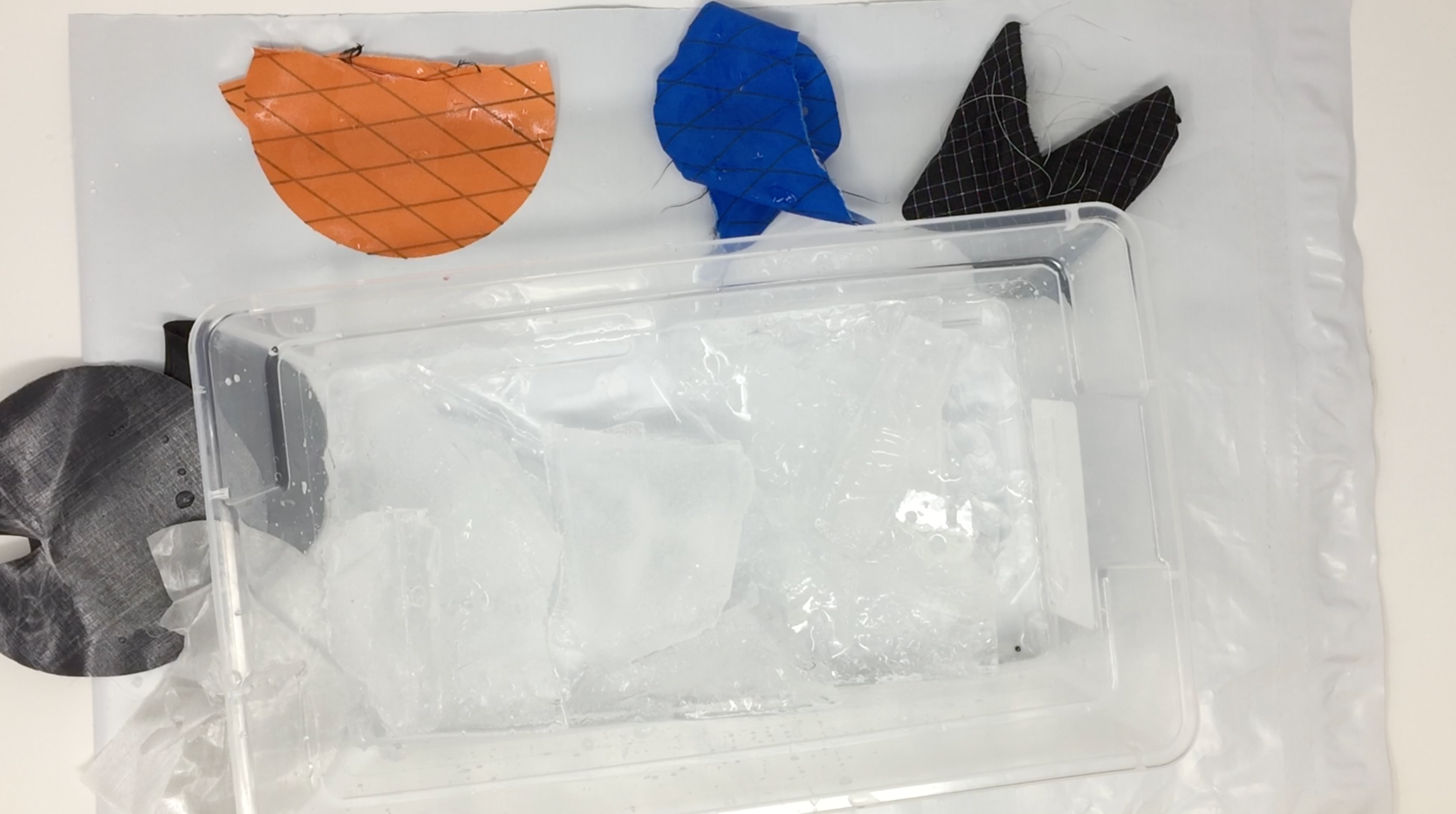Your Cart is Empty
Recently, we got a little curious. We wanted to know what happens - if anything - to fabrics when they freeze.
To find out, we took six of our most popular pack fabrics and put them through a few basic tests. We froze, cut, soaked, and then refroze them - all in the name of science!
OK, maybe not science in the strictest sense, but interesting nonetheless :)
Here are the fabrics we chose to test:
Test Details:
This first test was simple as we wanted to get a baseline before going any further.
Result:
The results were surprisingly BORING.
Despite our best efforts, 24 hours in the freezer seemed to have little effect on any of the swatches. As far as our hands could tell, it was fabrics 1, freezer 0.
But we continued on, undeterred...
Test Details:
- 0º F
- 24 hours
- Swatches were partially/mostly encased in ice
- Swatches were compromised with a noticeable cut in the fabric
- Test warp, weft, bias, and general pliability
Result:
Once again, we were greeted by a fairly boring result.
As far as we can tell, there was no loss of structural integrity to the fabrics. That said, we did make some interesting observations:
According to our limited tests, all of these fabrics should perform well in
damp and cold conditions.
In response to these findings, we realized that the fabric selection triad still holds. Since there’s minimal difference in the fabric performance in below freezing temperatures, all three are still great options when cold weather is a factor in your decision.
Although this experiment didn’t lead to a riveting result, it does affirm the resiliency of these fabrics. Simply put, they are some of the strongest and most durable materials you can buy for making backpacks, bags, reinforcement areas, and more.
If we had to pick winners, the easy choices would be 5.0 oz Dyneema Composite Hybrid and the 3.9 oz Venom UHMWPE TPU. After multiple freezes and a significant test tear, these fabrics didn't budge. They also soaked up very little moisture and dried quickly.
IMPORTANT NOTE:
These tests were not performed with scientific equipment or calculations. These are anecdotal tests done to spark engaging conversation and content. You should NOT base any decisions for vital situations off of the information found here.
If you are interested in knowing more or finding additional information about the effects of extreme temperatures on different materials, please let us know and we can possibly find more data for you. Thanks for reading!
Comments will be approved before showing up.


